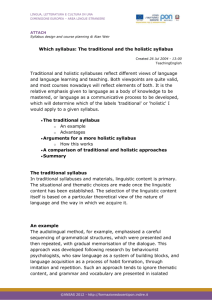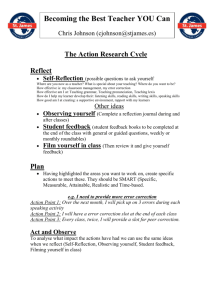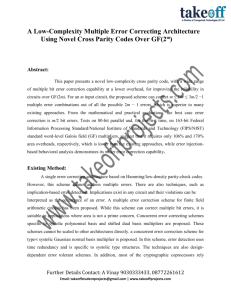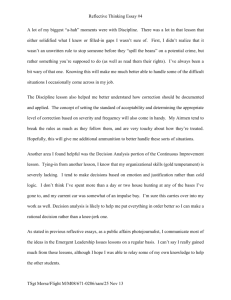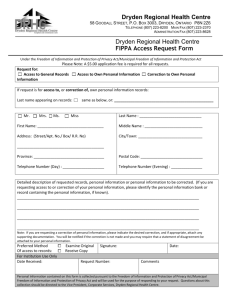Lingua, letteratura e cultura in una dimensione europea – Area
advertisement
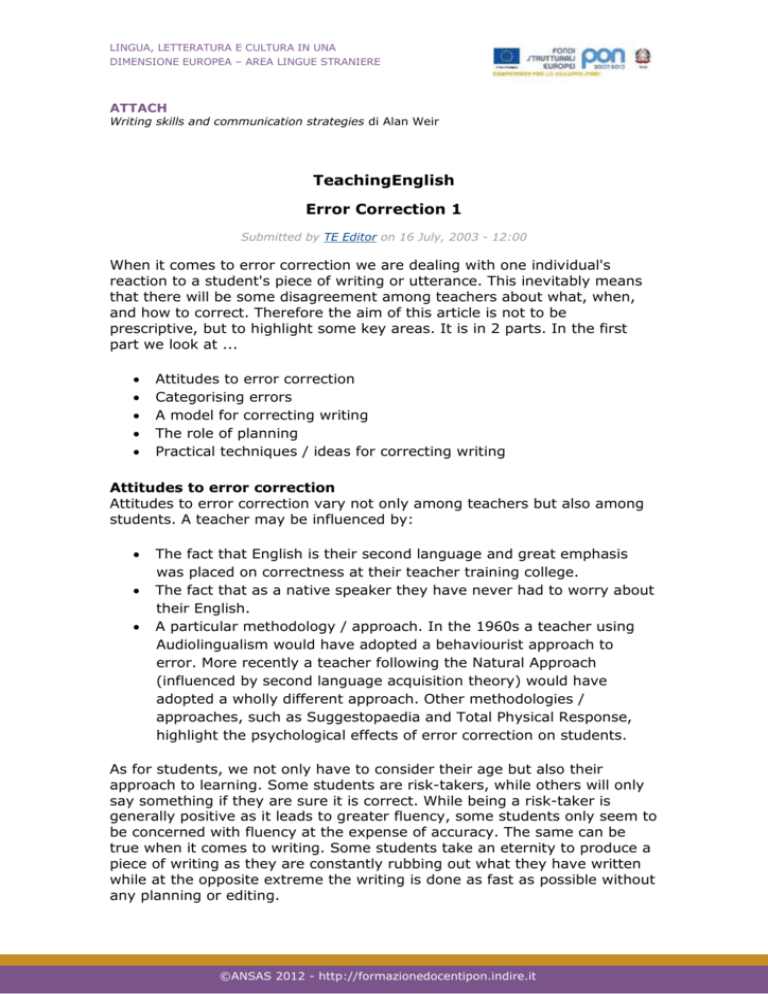
LINGUA, LETTERATURA E CULTURA IN UNA DIMENSIONE EUROPEA – AREA LINGUE STRANIERE ATTACH Writing skills and communication strategies di Alan Weir TeachingEnglish Error Correction 1 Submitted by TE Editor on 16 July, 2003 - 12:00 When it comes to error correction we are dealing with one individual's reaction to a student's piece of writing or utterance. This inevitably means that there will be some disagreement among teachers about what, when, and how to correct. Therefore the aim of this article is not to be prescriptive, but to highlight some key areas. It is in 2 parts. In the first part we look at ... Attitudes to error correction Categorising errors A model for correcting writing The role of planning Practical techniques / ideas for correcting writing Attitudes to error correction Attitudes to error correction vary not only among teachers but also among students. A teacher may be influenced by: The fact that English is their second language and great emphasis was placed on correctness at their teacher training college. The fact that as a native speaker they have never had to worry about their English. A particular methodology / approach. In the 1960s a teacher using Audiolingualism would have adopted a behaviourist approach to error. More recently a teacher following the Natural Approach (influenced by second language acquisition theory) would have adopted a wholly different approach. Other methodologies / approaches, such as Suggestopaedia and Total Physical Response, highlight the psychological effects of error correction on students. As for students, we not only have to consider their age but also their approach to learning. Some students are risk-takers, while others will only say something if they are sure it is correct. While being a risk-taker is generally positive as it leads to greater fluency, some students only seem to be concerned with fluency at the expense of accuracy. The same can be true when it comes to writing. Some students take an eternity to produce a piece of writing as they are constantly rubbing out what they have written while at the opposite extreme the writing is done as fast as possible without any planning or editing. ©ANSAS 2012 - http://formazionedocentipon.indire.it LINGUA, LETTERATURA E CULTURA IN UNA DIMENSIONE EUROPEA – AREA LINGUE STRANIERE Categorising errors We can categorise an error by the reason for its production or by its linguistic type. What's the reason for the error? o It is the result of a random guess (pre-systematic). o It was produced while testing out hypotheses (systematic). o It is a slip of the tongue, a lapse, a mistake (caused by carelessness, fatigue etc.) (post-systematic). To be sure about the type of error produced by a student we need to know where the student's interlanguage is (the language used by a student in the process of learning a second language). What type is it? We can classify errors simply as productive (spoken or written) or receptive (faulty understanding). Alternatively we can use the following: o A lexical error - vocabulary o A phonological error - pronunciation o A syntactic error- grammar o An interpretive error - misunderstanding of a speaker's intention or meaning o A pragmatic error - failure to apply the rules of conversation A model for correcting writing When writing we do not have the chance to rephrase or clarify what we are saying. Our message must be clear the first time. Written errors are also less tolerated than spoken errors outside the classroom. Look at this model for correcting written work and evaluate it for your teaching situation. 1. Comprehensibility o Can you understand the output? o Are there areas of incoherence? o Do these affect the overall message? o Does communication break down? 2. Task o Has the student addressed the task? 3. Syntax and Lexis o Are they appropriate to the task? o Are they accurate? ©ANSAS 2012 - http://formazionedocentipon.indire.it LINGUA, LETTERATURA E CULTURA IN UNA DIMENSIONE EUROPEA – AREA LINGUE STRANIERE The role of planning Giving students time to plan not only results in a wider range of language being used, it also helps students to avoid some of the following: Inappropriate layout No paragraphs Lack of cohesion Inappropriate style Whichever style of plan (linear notes or a mind map) these questions will help students to plan their writing: What am I going to write? (An informal letter etc.) What layout do I need? What information am I going to include? How many paragraphs do I need? What grammar / vocabulary am I going to use? What linking words (because, and etc.) am I going to use? Practical techniques / ideas for correcting writing Training students to edit Even though they have invested time in doing a writing task, students often don't spend a few more minutes checking their writing. The following activities not only help to develop students' editing skills in a fun way, but also enable the teacher to focus on key errors without individual students losing face. o Grammar auctions: (From Grammar Games by M.Rinvolucri CUP) Students receive a number of sentences taken from their written work. Some are correct, some wrong. Students in groups have to try to buy the correct ones in the auction. They have a limited amount of money. The team with the most correct sentences wins. o Mistakes mazes: (From Correction by Bartram and Walton Thomson Heinle). Students have a list of sentences. Their route through a maze depends on whether the sentences are right or wrong. They follow white arrows for correct sentences and black ones for incorrect ones. If they have identified all the sentences correctly they escape, if not they have to retrace their steps and find out where they went wrong. Correction techniques It can be difficult to decide on what and how much to correct in a student's piece of writing. Students can develop a negative attitude towards writing because their teacher corrects all their errors or if the ©ANSAS 2012 - http://formazionedocentipon.indire.it LINGUA, LETTERATURA E CULTURA IN UNA DIMENSIONE EUROPEA – AREA LINGUE STRANIERE teacher only corrects a few, they might feel that the teacher hasn't spent sufficient time looking at their work. Evaluate the following techniques and decide which would be appropriate for your teaching situation. Underline inappropriate language in a piece of writing using a specific colour. o Using a different colour from above, underline examples of appropriate language. o Correct errors by writing the correct forms in their place. o Use codes in the margin to identify the type of error(s), for example, VOC = a lexical error. Students have to identify the error(s) and if possible make a correction. o Alternatively put crosses in the margin for the number of errors in each line. Students then try to identify the errors and make corrections. o Put students into pairs / groups. They correct each other's work using one or more of the techniques above. o From time to time give students an individual breakdown of recurring problems in their written work. Rolf Donald, teacher and teacher trainer, Eastbourne School of English Source: www.teachingenglish.org.uk/articles/error-correction-1 ©ANSAS 2012 - http://formazionedocentipon.indire.it
